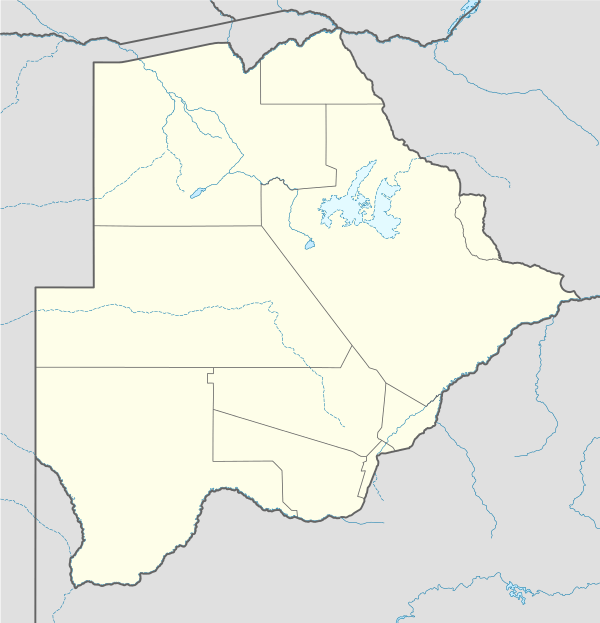Lobatse
| Lobatse | |
|---|---|
| Village | |
|
Town centre | |
 Lobatse | |
| Coordinates: 25°13′S 25°40′E / 25.217°S 25.667°E | |
| Country | Botswana |
| District | South-East District |
| Elevation | 1,188 m (3,898 ft) |
| Population (2011)[1] | |
| • Total | 29,082 |
| Time zone | GMT +2 |
| Climate | BSh |
Lobatse is a town in South-Eastern Botswana, 70 kilometres south of the capital Gaborone, situated in a valley running north towards Gaborone. Lobatse has a population of 29,800 (Central Statistics Office, 2002). The town is an administrative district, with a Town Council.[2]
History
The Bakgwaketse people were the first to settle in the area , which was later occupied by the Bangwaketse people in the 18th century. Archaeological remains still exist from these period
Until independence in 1966, Botswana was the British Protectorate of Bechuanaland, which had the unique problem in that it was the only country in the world where the capital was outside the borders of the country. Mafikeng, South Africa was then the capital, upon independence the new capital was either to be Lobatse or Gaborone. Gaborone was selected as the seat of the government, while Lobatse was selected as the seat of the judicial system.
In 1954 the colonial development co-operation built the Lobatse Abbatoir which is now BMC (Botswana Meat Commission). Lobatse has the distinction of having the first tarmac road in Botswana, which was laid in 1958. At independence on 30 September 1966, this 5 km-long section was the only tarred road in the entire country. This was the road from the Lobatse Station to the High Court which was specially built for the visit of King George VI and Queen Elizabeth in 1947.
Economy
The High Court of Botswana is situated in Lobatse, as well as the headquarters of the Department of Geological Surveys and the Lobatse Mental Hospital, the only mental institution in Botswana. Several industries are located in Lobatse, the most important of which is the Botswana Meat Commission (BMC), as ranching was the centre of the Botswana economy before the discovery of diamonds and remains an important part of the culture.
Government and infrastructure
The Botswana Prison Service (BPS) operates the Lobatse Prison.[3]
Gallery
 Approaching from the west
Approaching from the west
See also
References
- ↑ "2011 census". Archived from the original on 11 January 2013.
- ↑ Laws of Botswana, Ministry of Local Government
- ↑ "Prisons and Rehabilitation." (Archive) Government of Botswana. Retrieved on 26 March 2013.
